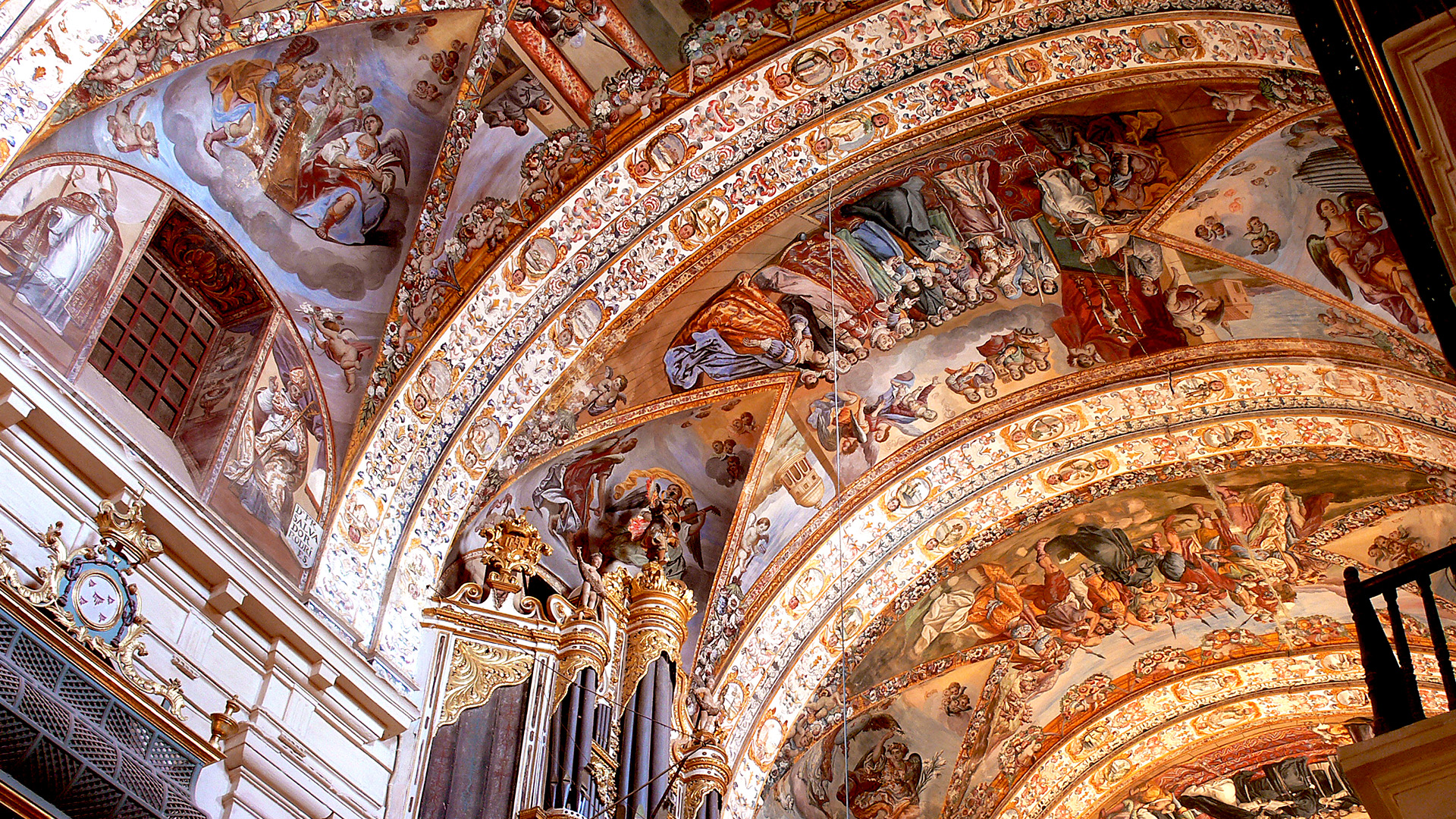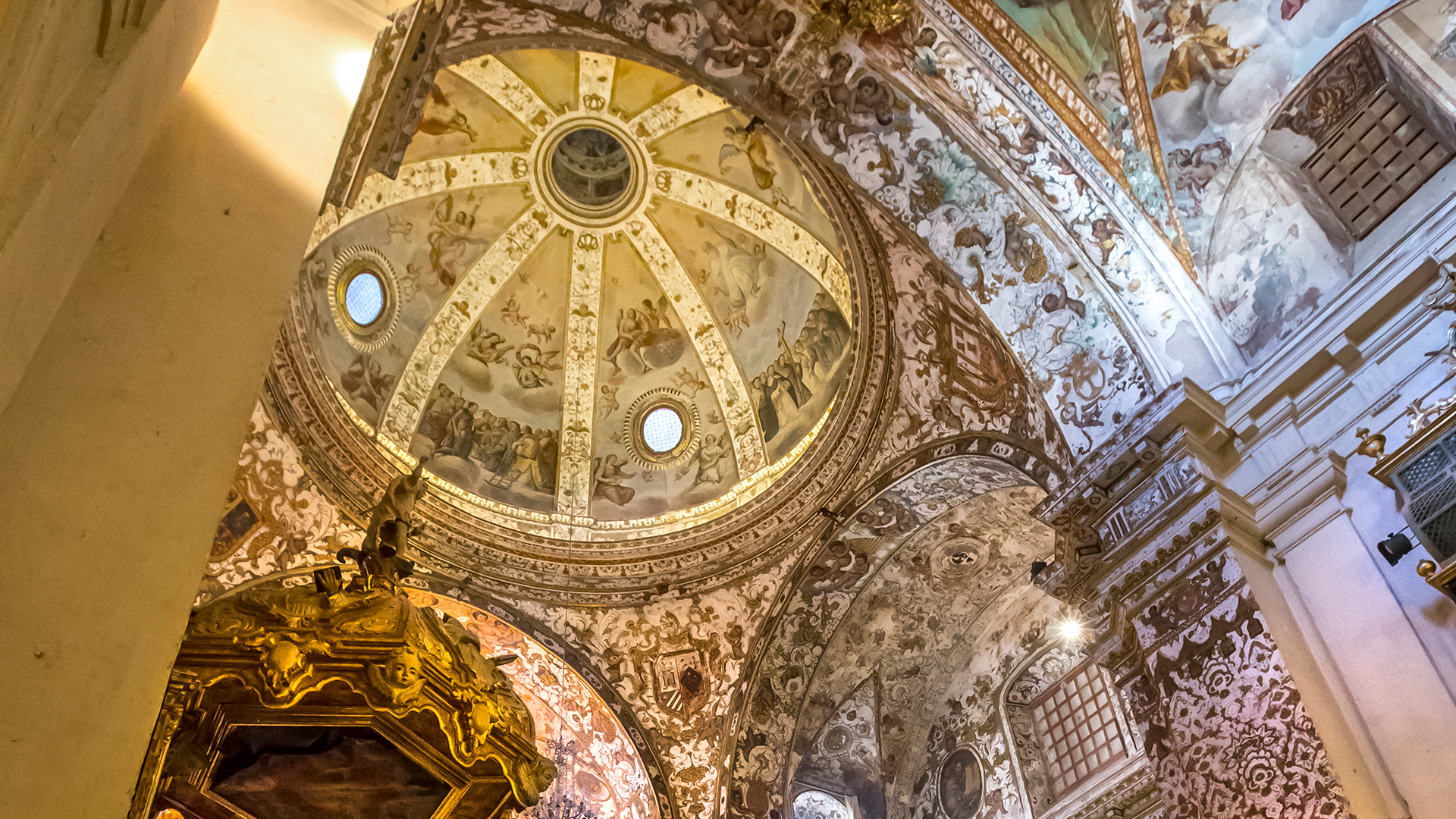Discover Church of Nuestra Señora de los Remedios.
The works of the current Church of Los Remedios began in 1628, being directed by the masters Gonzalo Yáñez and Fernado de Oviedo. To the first we owe the construction of the walls of the temple up to the height of the roof. Fernando de Oviedo was in charge of the interior architectural molding as well as the roofs.
The façade has an original layout, being preceded by a wall that closes the compass with a clear mannerist characterThe cover itself is quite simple, highlighting in it a loggia or portico, whose roof rests on Tuscan columns, through three semicircular arches. The beautiful belfry, which is made entirely of stone, was built by the master stonemason Pedro de Arévalo. The plan of the Church is of Latin cross, with naves and lateral chapels, presenting flat head.

The central nave, higher than the lateral ones, is covered with a half-barrel vault, divided into five sections. The dome of the transept is half orange topped in cupulino. Tempera paintings cover the entire temple. The iconographic themes of the cruise refer to passages from the Life of the Virgin, St. Anthony and St. Joseph. The main altarpiece of this church, one of the most beautiful of those existing in Antequera, built in the first third of the eighteenth century, is the work of the stucco and carver from Antequera Antonio Rivera. His compositional scheme participates in the usual José de Churriguera. Behind the altarpiece is the magnificent dressing room of the Virgen de los Remedios, made between 1700 and 1707. Its plant is hexagonal and is covered with a hemispherical vault on pendentives, finishing the whole a cupulino. This space is lavishly decorated with plasterwork.
Centering the enclosure is the crowned temple or throne of the Virgin. The sculpture of the Patron Saint is the work of the early sixteenth century, although it was the subject of a profound transformation in 1816 by the sculptor Miguel Márquez García. Crowned in 1922 she is Perpetual Mayor of the city. In the collateral altarpieces of the transept, you can see the sculptures of San José and San Antonio, works of Andrés de Carvajal. Another very interesting work of this author is the sculptural group of the Virgin of the Angels, which is located in the altarpiece frontero at the door of the sacristy.

Among the chapels of the nave of the Gospel, it is worth mentioning the rococo dressing room occupied by the Virgen del Tránsito. In the nave of the epistle it is interesting to stop at the Christ of Luck, work of the sixteenth century. Also, in the large canvas that reproduces the scene of The delivery of the Virgen de los Remedios to Fray Martín de las Cruces by the apostle Santiago.
Contact:
Address: Calle Infante Don Fernando, 72, Antequera, Málaga
Schedule: Monday to Friday from 11:00–13:00
Phone: 952 70 25 05
